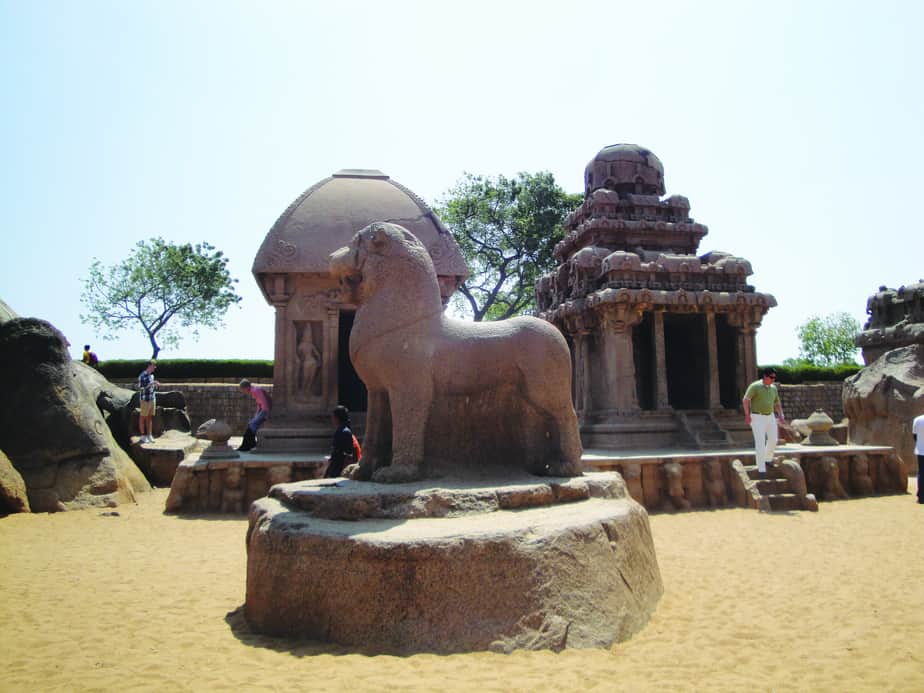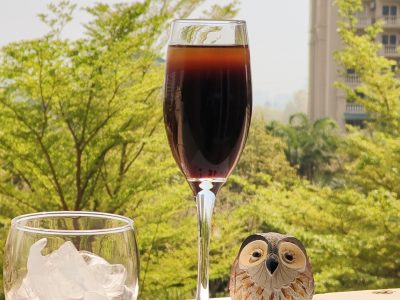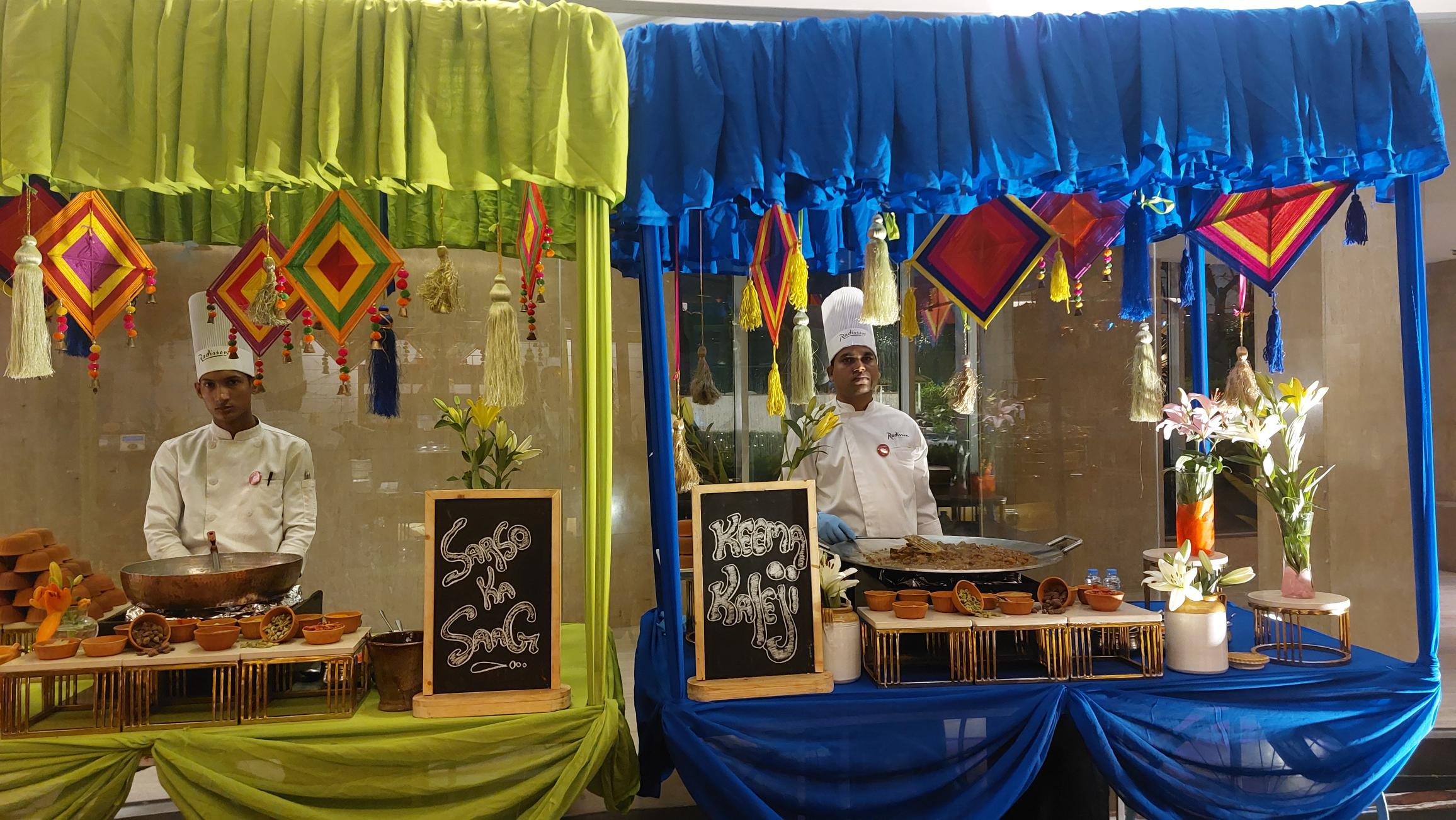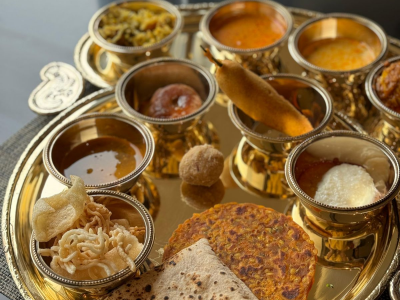Mahabalipuram is an amazing open art gallery of rock-cut temples and magnificent sculptures, suggesting several sagas from Hindu mythology
Remember reading about Mahabalipuram in school? This coastal town had an important seaport as far back in time as the first century. About 60 km from Chennai, on the Bay of Bengal coast, it is a perfect getaway from Chennai and a living testimony to the creativity of sculptors of the seventh century.
Mahabalipuram or Mamallapuram, got its name from Narasimha Pallavan (AD 638-668), who was a great wrestler, also known as Mamallan. This destination is for travellers seeking chiseled art, marvels of Nature, peace and above all, an experience like no other, away from the hustle bustle of the city.
Mahabalipuram
Most of the temples and rock carvings of this place were built during the reigns of Narsinha Varman I (AD 630-668) and Narsinha Varman II (AD 700-728). Of these, what steals the show is the ‘Shore Temple’ that stands out owing to its extraordinary location abutting the sea. The Five Rathas, sculpted in granite and situated nearby, were created by Narasimhavarman I. Also known as Mamalla (AD 630-668), the great wrestler, it is after whom that Mam-allapuram is named.
Here are my top picks which should not be missed:
The Shore Temple
The Shore Temple, declared a World Heritage Monument, is a twin temple dedicated to both Vishnu and Siva. It was built by Narasimhavarman II and has a Somaskanda panel in one temple and a sculpture of the reclining Vishnu in the other. The twin temple has around it a series of sculptures of bulls, Yalis and Varahas.
Five Rathas of Pandavs
Of the nine monolithic temples here, the most important are Five Rathas known after the five Pandav brothers of the Mahabharata. These monuments are carved out of a single rock. The Draupadi ratha is a simple hut-like kutagara shrine while the Arjuna ratha is a dvitala vimana with a mukhamandapa. The Bhima ratha is rectangular with a salakara wagon-vaulted roof. The Dharmaraja ratha is a tritala vimana having functional shrines at all the talas. The Nakula-Sahadeva ratha with an apsidal plan and elevation indicate the experimental tendency of the architect.
Varaha Cave Temple
One of the greatest examples of Pallava art, the temple showcases ancient Vishwakarma Sthapathis or Indian rock-cut cave architecture. It was created during the reign of Narasimhavarman I Mahamalla. The beautiful architectural style hints at the early stage in Dravidian architecture.
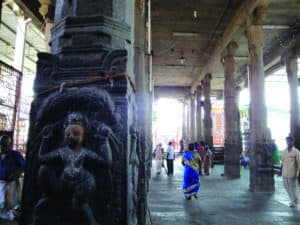
The Varaha Cave Temple is a small shrine. As you enter the temple through an exquisite mandapa, a beautiful verandah with two pillars and two semi-columns greets you. All four contain doorkeepers, figures of horned lions at the bases of columns. The entrance to the temple hall is guarded by two gatekeepers. Side walls inside the temple are adorned with four large sculpted panels.
The most important sculpture is of Varaha, the avatar of Lord Vishnu. Varaha is shown holding up his wife Bhumi, Mother Earth. He has saved her from Naga, the snake king. Another fascinating sculptrure shows Vishnu Trivikrama as a dwarf with one foot on earth, another in clouded sky and the third leg on tyrant Bali, pushing him to the underworld. Next to Vishnu stand Brahma, Shiva, Sun and the moon. Another panel on the east shows goddess Lakshmi with two maidens and two elephants. The fourth panel shows goddess Durga standing on a lotus under umbrella. This is the only cave temple in Mahabalipuram where worship is conducted daily, morning and evening.
Arjuna’s Penance
Perhaps the world’s largest bas-relief, this is a photographer’s delight. Dating back to the mid-seventh century, it stands at a height of 43 feet, the monolith carved on the face of two huge adjoining boulders, making its length around 96 feet. There are a couple of legends around this monumental structure and its composition includes several interesting theories. A natural cleft populated by Nagas (snakes) separates the two halves of the relief. Water pours down this fissure perhaps suggesting the Ganges’ descent. Just above the shrine, Arjuna or Bhagiratha is carved standing on one leg, his arms upraised, in a yoga posture. Behind him appears Lord Shiva holding a weapon, attended by celestial beings. Figures of life-sized elephants are shown protecting their young besides forms of several other animals.
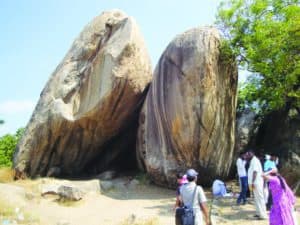
Krishna’s Butter Ball
Originally known as Vaanirai Kal in Tamil which literally translates to Stone of The Sky God, the 20 feet high and 5 metre wide rock estimated to weigh over 250 tonne has been in its place on a small hillock since past 1,200 years. It is a favourite posing spot for tourists.
Dining in Mahabalipuram
For a terrific view, reserve your table under the thatched roof by the beach at ‘The Wharf’ – seaside grill restaurant of Radisson Blu Resort Temple Bay. Thanks to Chef Muthu Kumar, Executive Chef of Novotel & Ibis Chennai OMR, and the lovely Manali Banerjee, I spent an evening here counting the stars and taking a stroll after our sumptuous meal.
You could also try a quick bite at any of the small eateries. Unfortunately, the very popular Babu Café was closed when I went as Babu was scouting for a bigger place. To be on the safe side for hygienic vegetarian food, Adyar Ananda Bhavan is the best bet.
As all good things come to an end, I had to bid goodbye to this amazing getaway, a definite must-return destination for travellers who visit Chennai.
Stay in Mamallapuram
• Radisson Blu Resort Temple Bay Mamallapuram.
• Novotel Chennai Sipcot and Ibis Chennai Sipcot Hotels are ideal for business travellers.
Best Time to Visit
The best time to visit is during October to March. One is advised to avoid the monsoon period.
Mamallapuram Dance Festival
Organised by Tamil Nadu Tourism Department, Mamallapuram Dance Festival is one of the most popular festivals in Mahabalipuram. The festival is organised every year in the months of December and January. During the festival, there are performances of different classical dance forms of India. This four-week dance festival is organised at Arjuna’s Penance, a bass-relief sculpture. The Pallava rock sculptures form the background of dance performances at the Mamallapuram Dance Festival.

